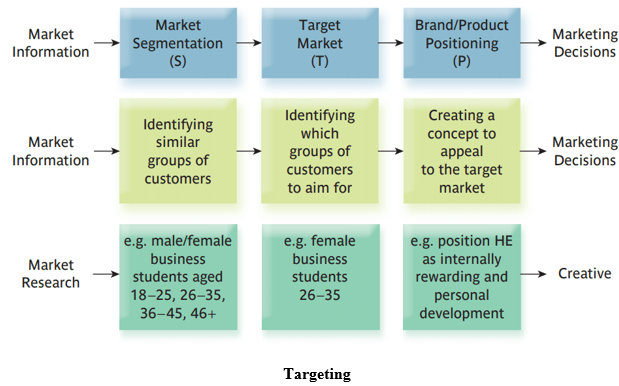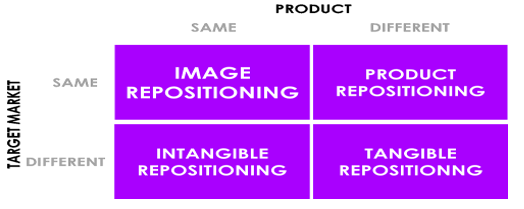STP-Segmentation Targeting Positioning And Brand Repositioning
Mar 11,22STP-Segmentation Targeting, Positioning And Brand Repositioning
Question:
Describe the STP-Segmentation Targeting, Positioning and Brand Repositioning.
Answer:
Introduction
Marketing Management
Introduction
Generally, segmentation, targeting, positioning (STP) and brand repositioning is a strategic marketing approach or model that used by the organizations in order to develop more effective and attractive marketing strategies, policies and practices. In the present time, it is one of the most powerful and common applied marketing model that helps the marketing leaders in order to create specific marketing strategies. STP allows a company to choose most valuable segments for a business. It is also help in creating of specific marketing mix and product positioning strategies effectively. Today, this marketing model is used in creating marketing communications plans. In this research paper, the concepts, applications and principles related to STP and brand repositioning would be analyzed and discussed. Also paper analyze the importance of such concepts in the business organizations.
Segmentation
It is about separating the varied market into homogeneous segments. Simply, segmentation is a strategic process of dividing a big market into sub-market of consumers with common characteristics or need. In the segmentation, small groups are created within the large market in order to bring together customer with similar interest, wants, requirements and needs. Along with this, it should also be noted down that, segmentation is help a company in grouping of individual customers into similar groups in order to effectively communicate features or benefits of a specific product or service (Capon, & Hulbert, 2007). In order to effectively segment the market, a company can use several criteria such as:
- Demographic Segmentation: According to this segmentation, a market is divided on base on the various specific variables such as: income, age, family life cycle, education level, occupation, sex, gender, marital & social status, nationality etc. These various are considered by the marketers in order to segment the customers.
- Geographical: It is one of the most commonly used, simplest and oldest methods dividing the consumers on the basis of geographical location. This segmentation is allow a company to target the customer based on their geographical location (Dost, 2006).
- Psychographic Segmentation: As per this, several psychographic characteristics of market is considered. It means, consumer market is divided as per their attitude, lifestyles, belief system, and habits of individual customers.
- Behavioral Segmentation: According to this, a market is categorized on the basis of individual customer’s knowledge toward the products/services and use of the product.

Targeting
It is all about determining the number of segments of the market to pursue. After the segmentation, targeting is the second stage. In the targeting, a company uses a range of promotional as well as marketing strategies as per the needs, tastes and wants of individual customers. Target segments can be defined as a group of specific customer that a company or marketer decides to deal or serve. It means, customers are targeted based on their common preferences, needs, wants and expectations (Drummond, Ensor, & Ashfor, 2007).
A viable segment is selected to serve the customers. With the help of targeting strategy, more attractive is selected. Along with this, it should also be noted down that, in the present time, a company is use several approaches of targeting including differentiated, undifferentiated, concentrated and customized target marketing. All these approaches are more important because these help to choose a specific target market. At the same time, it is also analyzed that, a company is also makes plan for media and advertising use with the help of targeting (Ferrell, & Hartline, 2012).
Positioning
It is all about developing or generating a characteristic image of a particular product/brand in the mind of consumers. In this stage of marketing model, a company is tries to create first impression in the minds of customers about the products or services. This helps a company in creating the perception and image of a product in the consumers. In addition to this, positioning is also allow a company to differentiate its products and services in terms of price, quality, features etc. This help in achieving the competitive scope and advantages over competitors successfully (Jianqi, 2013)
There are a number of effective positioning strategies are utilized by the company to develop unique position of the brand or product. For case, competition based, umbrella, repositioning, Un-owned positioning etc. are the most commonly used positioning. Positioning is also called last stage of the STP process. This is focus on how the consumers views a company’s product and service in comparison of competitors. For the positioning, a company is try to understand the perceptions of the customers (Kampamba, 2015).
Brand Repositioning
A brand repositioning is a marketing strategy and used by a company when it sees decline in the sales, or revenue or profit over a time. In addition to this, it should also be noted down that, when a company bring modification or changes in its brand status in the market, brand repositioning strategy applied by a company to gain competitive advantages. Brand repositioning is done in order to satisfy needs and wants of the customers. At the same time, this brand repositioning strategy is also help a company to modify the method customer associate with their products and brands (Kim, Song, & Kim, 2009).
With the help of this, renewed customer perception is developed that allow a company to compete in the market more effectively and successfully via distinction. A brand repositioning strategy can also be used by a company when there is any change in customer’s wants, needs and expectations. As per this strategy, a company is change the target market or product benefits. In the present time, a company is use various types of brand repositioning strategies such as: Image repositioning, Product repositioning, Intangible & Tangible repositioning etc.

- Image Repositioning: According to this strategy, a company makes the changes in the image of a particular product or service or brand without changing target market and product. A marketing manager is focus on enhancing the perception as well as image of the product.
- Product Repositioning: Based on this strategy, changes in the product or services are made without changing the target market. For instance, due to the technological changes, a company can use this strategy.
- Intangible Repositioning: As per this strategy, a company is target a different market and customers with the same product (Kleindl, 2006).
- Tangible Repositioning: According to this strategy, both target market and product is changed for purpose to repositioning of brand. This helps the company to appeal to a new market by offering new product.
Conclusion
On the basis of above analysis, discussion, and findings, it is concluded that, STP and brand repositioning helps the business organizations in developing as well as creating more effective marketing strategies and polices and allow them to gain competitive advantages over competitors. At the same time, it can also be summarized that, these also allow companies to design their marketing and other business strategies to improve market share, revenue and profit level. Overall, it is suggested that, in order to become success and market leader, a company should apply and use such strategies more effectively and properly. Finally, it is also concluded that, brand repositioning and STP strategies are not only important but also essential for the overall growth and success in the market.
References
Capon, N. & Hulbert, J. M. (2007). Managing Marketing in the 21st Century: Developing and Implementing the Market Strategy. Wessex Publishing.
Dost, C. (2006). International Marketing Strategies: Example: Coca Cola. Germany: GRIN Verlag.
Drummond, G., Ensor, J. & Ashfor, R. (2007). Strategic Marketing. UK: Routledge.
Ferrell, O.C. & Hartline, M. (2012). Marketing Strategy (6th ed.). USA: Cengage Learning.
Jianqi, Z. H. A. N. G. (2013). The Application of STP Marketing Strategy into VMS Products of Company D. Business Economy, 9, 022.
Kampamba, J. (2015). An Analysis of the Potential Target Market through the Application of the STP Principle/Model. Mediterranean Journal of Social Sciences, 6(4), 324.
Kim, Y.A., Song, H.S. & Kim, S.H. (2009) A new marketing strategy map for direct marketing. Knowledge-Based Systems, 22 (5), 327-335.
Kleindl, B. (2006). International Marketing. USA: Cengage Learning.





